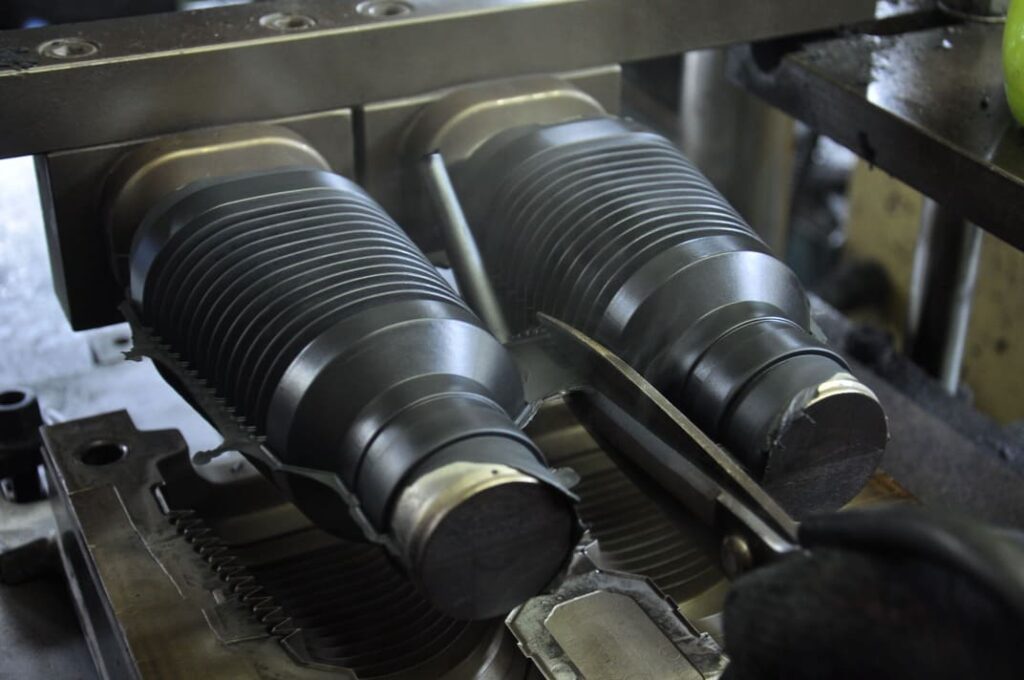Are you looking to understand how to measure the viscosity of rubber? This property is essential for determining how rubber will flow during manufacturing processes, such as extrusion or molding.
Viscosity in rubber is measured to determine its flowability during processing. Methods like the Mooney viscosity test and rheometer test are commonly used to assess this property.

Understanding the viscosity of rubber helps manufacturers optimize processing conditions and ensure product consistency. Let’s dive into the methods commonly used to measure the viscosity of rubber and why it matters in production.
What Is Viscosity in Rubber?
Are you familiar with viscosity and why it’s important for rubber processing1? Knowing how it affects rubber flow can help you make better material choices and adjustments during manufacturing.
Viscosity refers to a material’s resistance to flow. In rubber, it indicates how easily the material can be processed, affecting extrusion, molding, and mixing.
Viscosity in rubber is a measure of its internal friction, or resistance to flow, under specific conditions. In the context of rubber manufacturing, the viscosity of a rubber compound determines how easily it can be processed during mixing, extrusion, or molding.
High viscosity means that the rubber compound is thick, making it harder to process, while low viscosity indicates a more fluid compound that flows more easily. The viscosity of rubber compounds is especially important in industries where precise molding and extrusion are required, such as in the production of seals, gaskets, hoses, and tires.
Viscosity is closely related to the molecular weight of the rubber and the level of crosslinking. As rubber compounds undergo curing (vulcanization), their viscosity changes, which is why measuring viscosity before and after curing is important for understanding how the material will behave in processing.
| Property | Definition | Impact on Manufacturing |
|---|---|---|
| Viscosity | Resistance to flow | Determines ease of processing |
| High Viscosity | Thick and resistant to flow | Harder to extrude or mold |
| Low Viscosity | More fluid and easy to process | Easier to extrude or mold |
✅ Why it matters:
Measuring viscosity ensures that rubber compounds have the right flow characteristics for efficient processing, reducing waste and ensuring the final product meets quality standards.
What Methods Are Used to Measure Rubber Viscosity?
Wondering how viscosity is measured in rubber? Let’s explore the common methods used to assess this property and how they work.
The two most common methods to measure rubber viscosity are the Mooney viscosity test and the rheometer test. Both tests provide insight into how a rubber compound will behave during processing.

There are two primary methods used to measure the viscosity of rubber compounds: the Mooney Viscosity Test and the Rheometer Test. Both are essential in understanding the flow characteristics of rubber during processing.
1. Mooney Viscosity Test2
The Mooney viscosity test is one of the most commonly used methods for measuring the viscosity of rubber compounds. It measures the viscosity of a rubber compound in a shear flow condition using a small rotor inside a chamber. The rubber compound is heated, and the resistance to rotor movement is measured at a given temperature. The test provides a Mooney value, which indicates the viscosity of the rubber.
- Mooney Viscosity: The Mooney value is a number that reflects the material’s viscosity at a specific temperature, typically 100°C. The higher the value, the thicker the rubber compound.
2. Rheometer Test3
The rheometer test is another widely used method to measure the viscosity of rubber. This test measures the material’s viscosity by applying rotational force to the rubber compound while it is being heated. The rheometer measures the change in viscosity during curing, providing insight into the flow properties of the compound both before and after vulcanization.
Rheometers are particularly useful because they can provide real-time data about the rubber’s viscosity during processing, helping manufacturers adjust their conditions for optimal performance.
| Test Type | Method of Measurement | What It Measures |
|---|---|---|
| Mooney Viscosity | Resistance to rotor movement in a heated chamber | Viscosity before curing |
| Rheometer Test | Rotational force applied during heating | Viscosity during curing |
✅ Why it matters:
By measuring viscosity accurately, manufacturers can adjust processing conditions and predict how the rubber will behave during molding, ensuring high-quality parts with minimal waste.
What Is the Best Method for Measuring Rubber Viscosity?
Which method should you use to measure viscosity? Depending on your needs, one method may provide more useful data than another.
The best method depends on your specific application. The Mooney viscosity test is ideal for checking pre-cured compounds, while the rheometer test is better for monitoring the viscosity during curing.
The choice between the Mooney viscosity test and the rheometer test depends on what you’re looking to measure and when you need the data:
Mooney Viscosity is great for measuring the viscosity of raw or uncured rubber. It provides a quick, reliable reading of a rubber compound's processability before curing. This test is especially useful for quality control during the production of rubber compounds, ensuring that they have the right viscosity for mixing and molding.
Rheometer Test is ideal when you want to measure viscosity during the curing process. It provides real-time data about how the rubber behaves under heat and pressure, which is crucial for adjusting curing conditions. The rheometer also gives information on the Cure Time and Cure State, which are critical in ensuring the rubber’s final properties meet the required specifications.
While both tests are useful, the rheometer is more comprehensive because it can provide information on how viscosity changes during the entire curing cycle, which is essential for optimizing the production process.
| Test Method | Best Use | Application |
|---|---|---|
| Mooney Viscosity | Pre-curing compound viscosity measurement | Raw compound mixing and molding |
| Rheometer Test | Viscosity measurement during curing | Curing optimization and quality control |
✅ Why it matters:
Choosing the right viscosity measurement method4 ensures that you can optimize your rubber production process, minimize defects, and improve product quality.
How Does Viscosity Affect Rubber Processing?
You might be wondering why viscosity is so important in rubber processing. Let’s explore how this property impacts the manufacturing of rubber components.
Viscosity plays a critical role in rubber processing. High viscosity rubber can be difficult to process, while low viscosity rubber may not hold shape as well. Proper viscosity ensures efficient molding and extrusion.

The viscosity of rubber directly affects several aspects of the production process:
Molding and Extrusion: High viscosity rubber is more difficult to extrude or mold because it resists flow, leading to longer processing times and potential defects. On the other hand, low viscosity rubber can flow too easily, leading to inconsistent parts or difficulty holding shapes during molding.
Mixing: The viscosity of rubber affects how well the materials mix together during the initial stages of production. If the viscosity is too high, mixing may be difficult, leading to inconsistent material properties.
Curing: During curing, viscosity affects how the rubber compound reacts to heat and pressure. High viscosity rubber may cure too slowly, leading to inefficiency, while low viscosity rubber may cure too quickly, leading to defects.
Manufacturers must carefully control viscosity to achieve the right balance of workability and consistency in the final product. Viscosity also influences the rubber's strength, elasticity, and flexibility once it is fully cured.
| Process Stage | Effect of Viscosity | Impact |
|---|---|---|
| Molding & Extrusion | High viscosity = harder to mold/extrude | Longer processing times |
| Mixing | High viscosity = harder to mix | Inconsistent properties |
| Curing | High viscosity = slower curing | Efficiency loss |
✅ Why it matters:
Viscosity control during the rubber processing stages ensures that parts are produced efficiently, consistently, and with the desired properties.
Conclusion
Measuring the viscosity of rubber is crucial for understanding how it will behave during processing, from mixing and molding to curing. Common methods like the Mooney viscosity test and the rheometer test provide valuable insights into how rubber flows under different conditions. Proper viscosity measurement allows manufacturers to optimize the production process, reduce waste, and ensure the final product meets the required specifications.
🚀 Need Custom Rubber Solutions with the Right Viscosity?
Contact Julong Rubber today or Request a Custom Quote to get high-quality rubber parts with the perfect viscosity for your application!
Or reach out to us directly via WhatsApp: Click here to message us on WhatsApp
Discover the significance of viscosity in rubber processing, affecting everything from molding to curing, ensuring product quality and efficiency. ↩
Explore this link to understand the Mooney Viscosity Test, a key method for measuring rubber viscosity, crucial for optimizing production. ↩
Learn about the Rheometer Test, which provides real-time viscosity data during curing, essential for quality control in rubber manufacturing. ↩
Discover various viscosity measurement methods to optimize rubber production and improve product quality effectively. ↩







